The late Tom Kreisler lives on in his New Plymouth home where his widow Lesley has paired his large-scale paintings with Mexican artefacts and family heirlooms
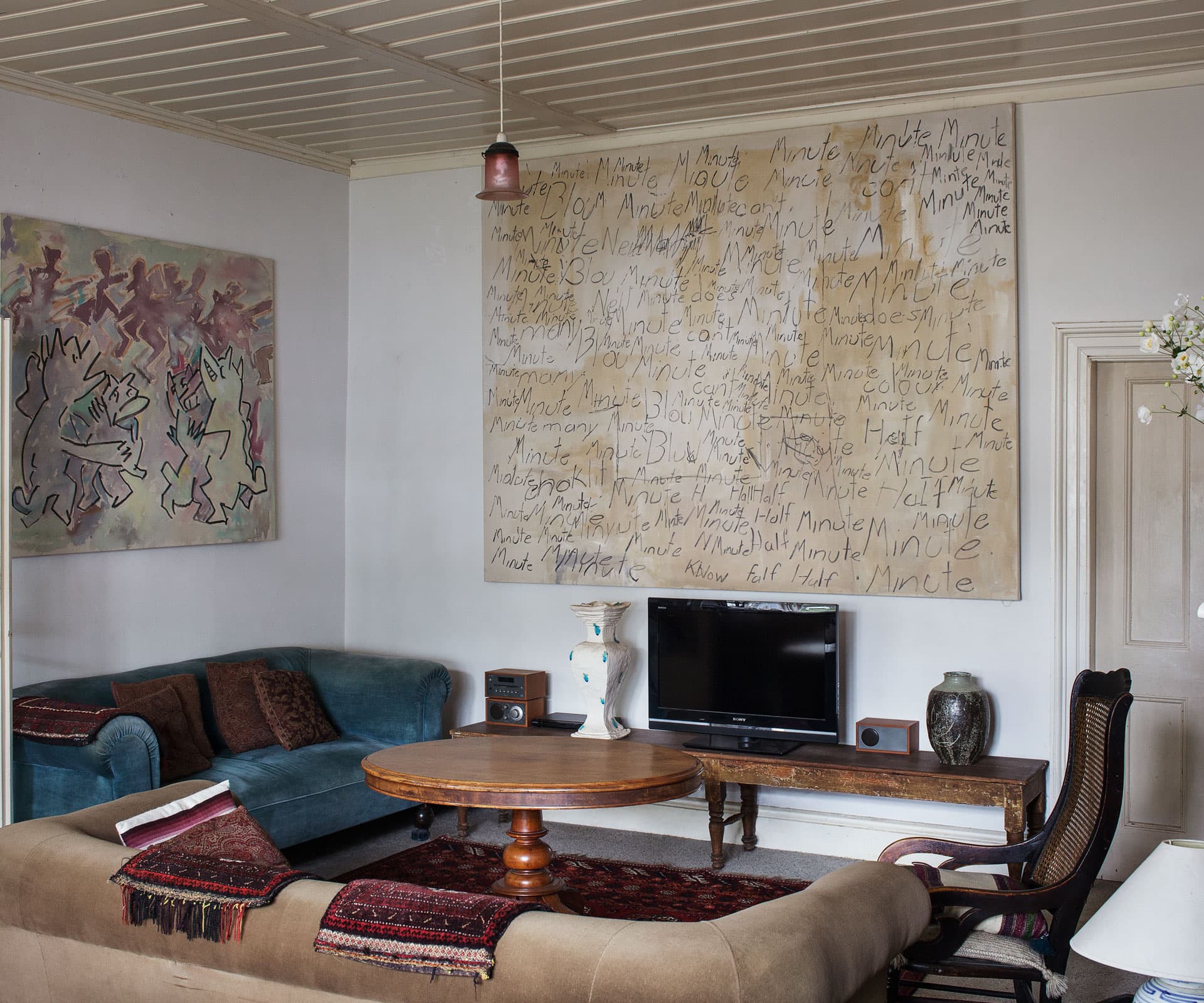
The home of the late Tom Kreisler is an ode to his work
Tom Kreisler was an enigmatic figure in the New Zealand arts community. Born in 1938 in Buenos Aires, Argentina, he came to live in New Zealand in 1952 where he studied art at the University of Canterbury’s School of Fine Arts.
In the late 60s, he moved to New Plymouth with his wife Lesley to teach art at New Plymouth Boys’ High School, make art and raise a family. Tom’s work was considered strikingly original with its almost cartoonish style and he’s my personal favourite of the period. He died in 2002 at the age of 63.
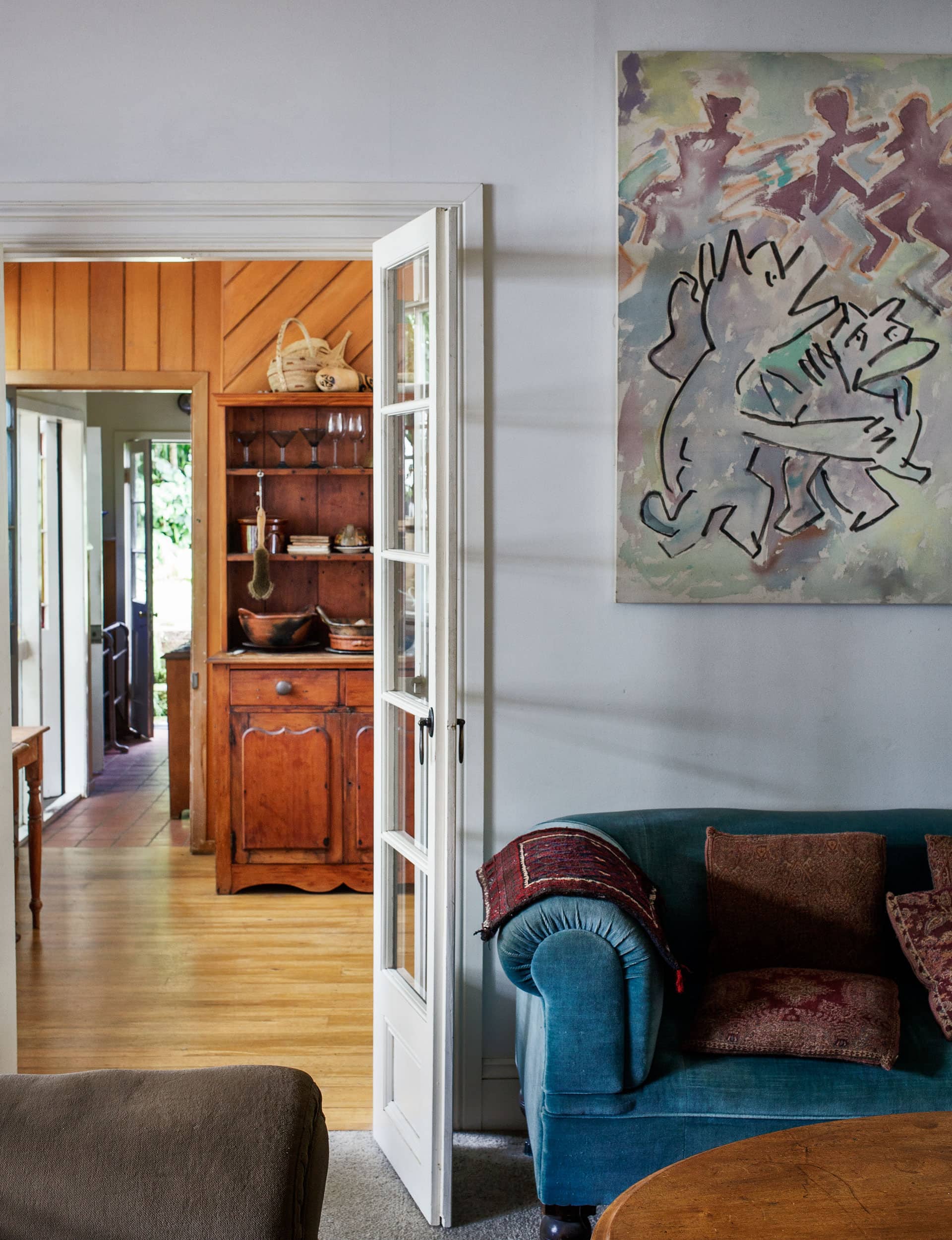
By chance, while holidaying on Great Barrier Island, I met Tom’s widow, Lesley. Their Medlands bach is the one I’d always wanted to see inside. Modest, yet romantic, a garland of spinifex is strung along the balcony and sun-faded green paint traces the windows. It reminded me of Robert Frank and June Leaf’s summer house in Nova Scotia that I’d seen fleetingly in a film.
I often prefer to imagine the interior of houses that I admire from the street, rather than see the reality. The interior of the Kreisler’s bach, however, was perfectly aligned with my expectations. Sparsely furnished with simple, well-proportioned useful furniture, perhaps the most beautiful Teuane Tibbo painting I’ve ever seen, a few Polynesian and Melanesian artefacts, wrought-iron bedheads, beds covered in plaid wool blankets, and collections of old straw hats for the beach. The interior is removed from the local vernacular of plywood walls and retro cane furniture, and I loved it.
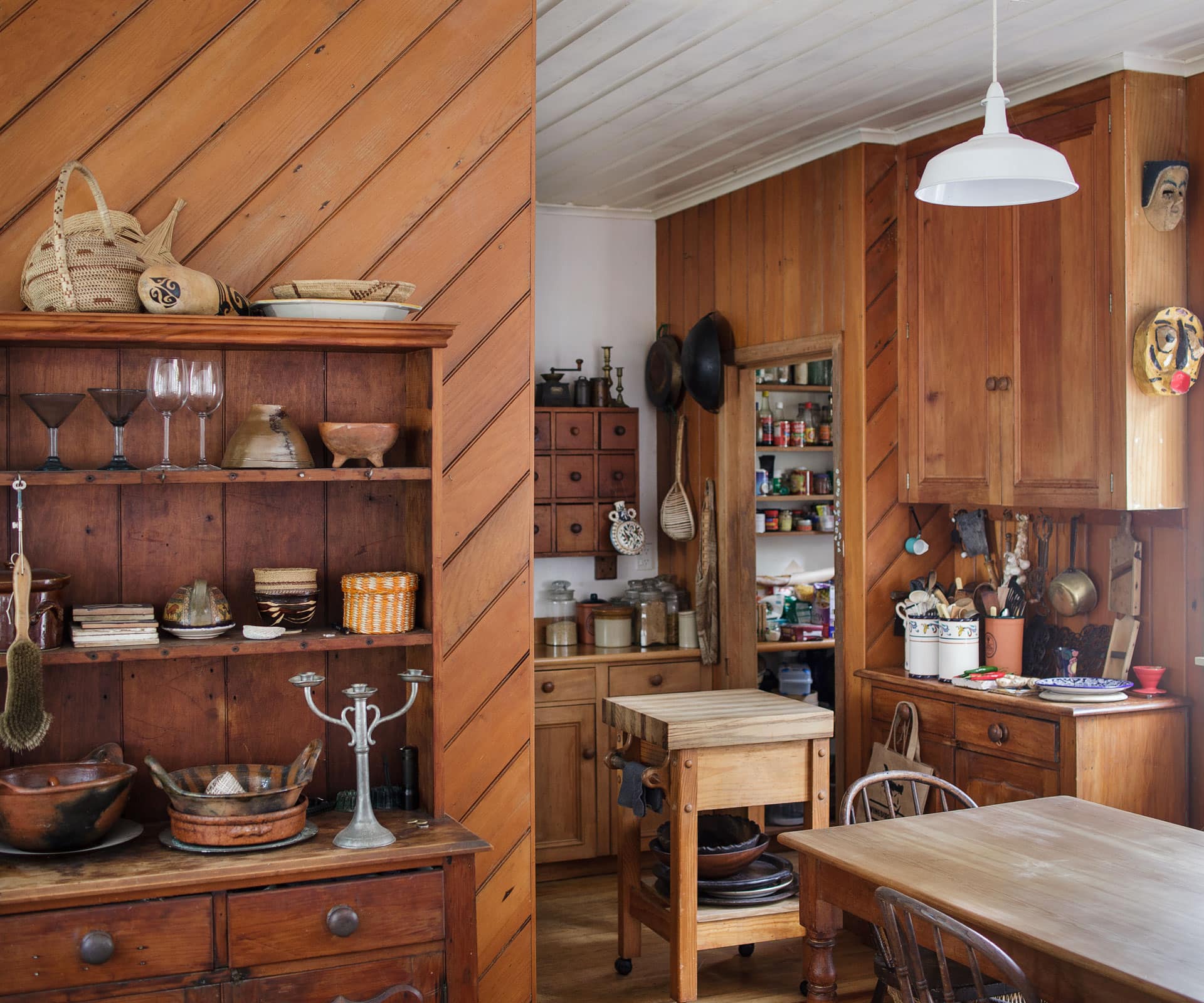
Lesley and I became friends and when my husband Darryl and I were in New Plymouth we visited her in her modest cottage, with its hearty interior that speaks of a full family life.“We moved here in 1972,” says Lesley. “We were about to buy another house when someone told us of this one. The people who owned it kept taking it off the market; I think they were looking for the right people. We were the right people at the right time, I guess. The only part we changed was the kitchen, which was quite modern. We added diagonal panelling with timber from another old house and we put in the wooden floor.”
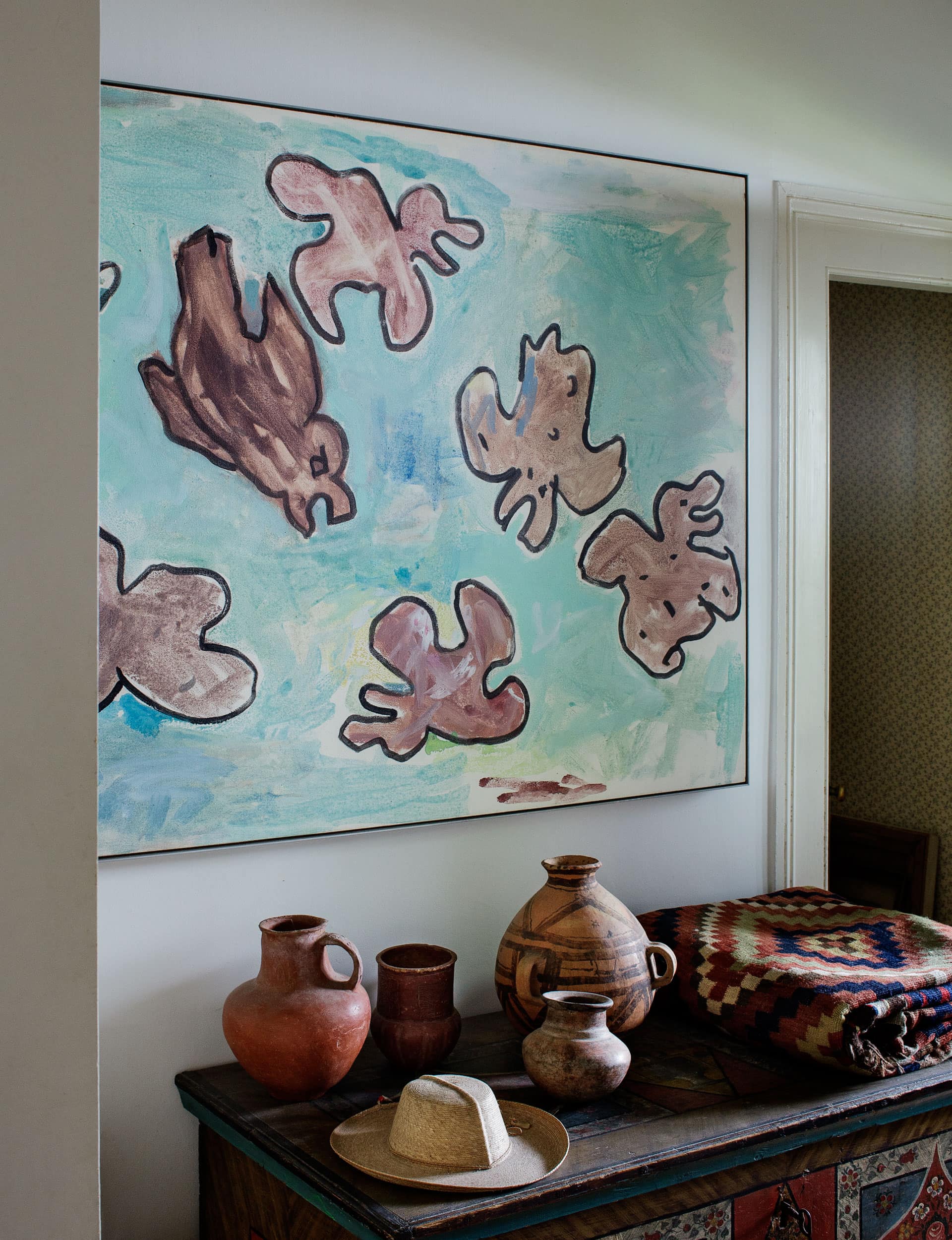
Lesley’s touches throughout the house are delicate and tactile, with light lace curtains brought back from Italy, which diffuse light in the bedroom and bathroom. Beautiful shades of velvet upholster the sofas. Tom’s presence can be felt in his large-scale paintings that dominate the living room. “Tom’s works keep getting bigger and bigger on the walls,” says Lesley. “I change them from time to time. I like the mix of Tom’s works, they have a lot of character and the colours are kind of amazing.”
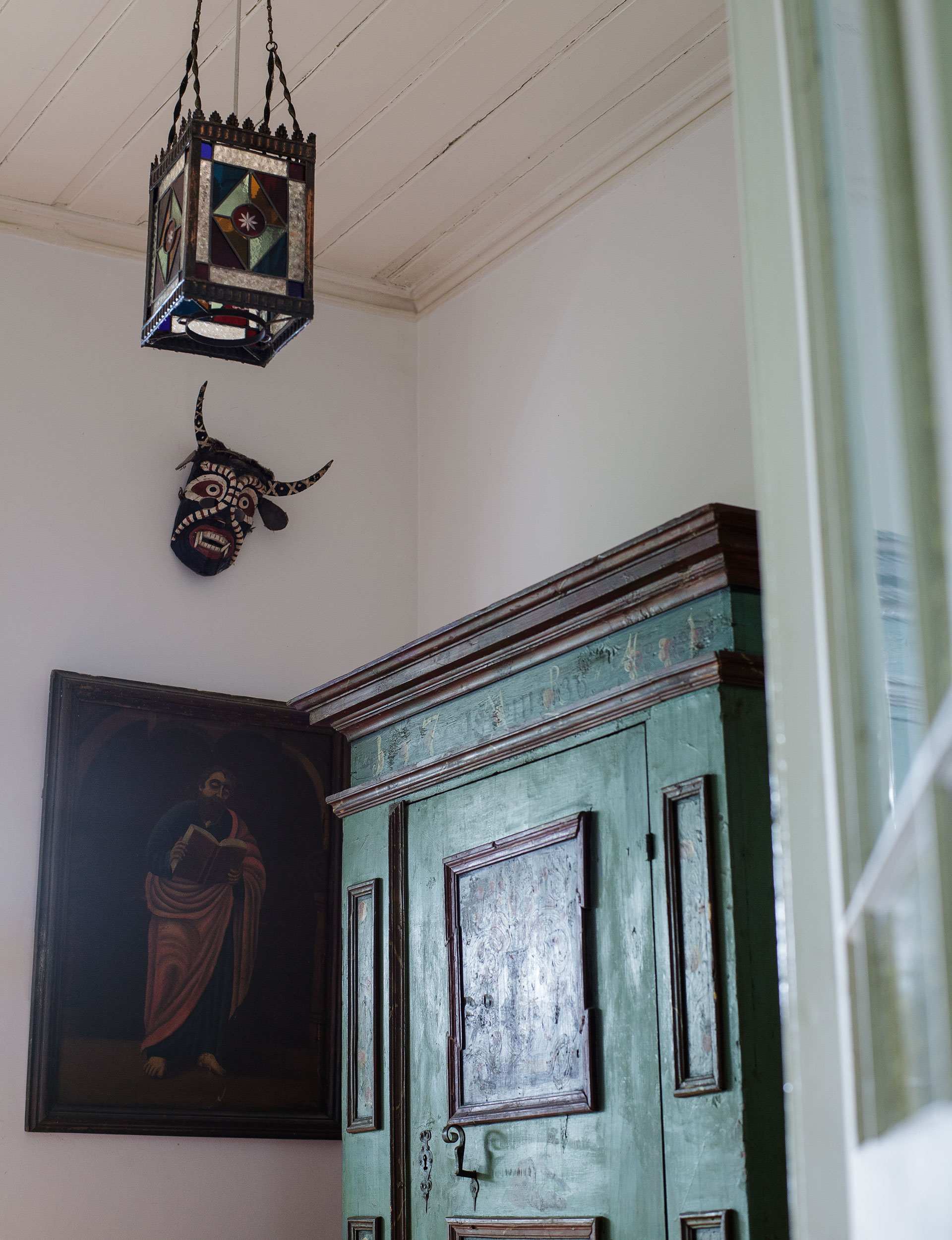
The house speaks not only of two very interesting individuals but of their life together – treasures from their travels, furniture from a culturally rich heritage, and the wear and tear of family life. Lesley and Tom had three boys, all of whom have careers in the arts. Nick, a photographer and musician, lives in Sydney, Eugene is an artist based in New Plymouth and Aaron is the head of fine arts at Ilam School of Fine Arts in Canterbury and a freelance curator. After teaching home economics for many years, Lesley opened the Lesley Kreisler Gallery which, for the past 30 years, has showcased a lively mix of New Zealand art.
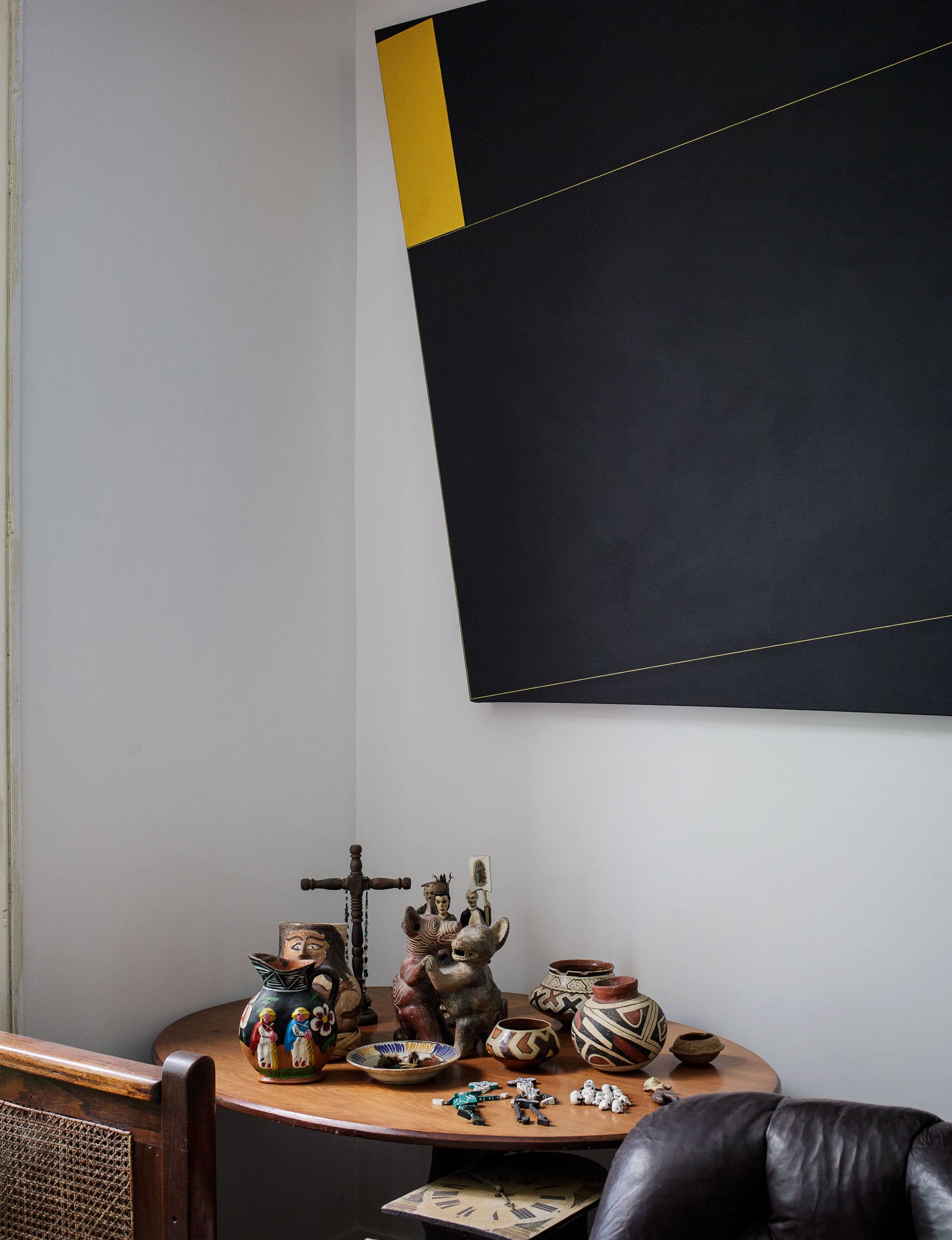
“We were living in Mexico in 1977 and when we returned we brought back a container that was custom built to the size of an old pew Tom found in a squat across the road from where we lived. We filled the rest of the crate with Equipale chairs and various artefacts and objects that caught our eye,” says Lesley. These objects included folk art from the Day of the Dead, in which Tom was very interested, and the traditional Mexican funeral ceramics of dancing dogs that he painted in ‘Dancing Dogs’ (1984).
Tom grew up in Argentina, the son of Austrian refugees who escaped the Nazis. When he was 13, his parents sent him to school in Christchurch where an uncle and aunt legally adopted him.
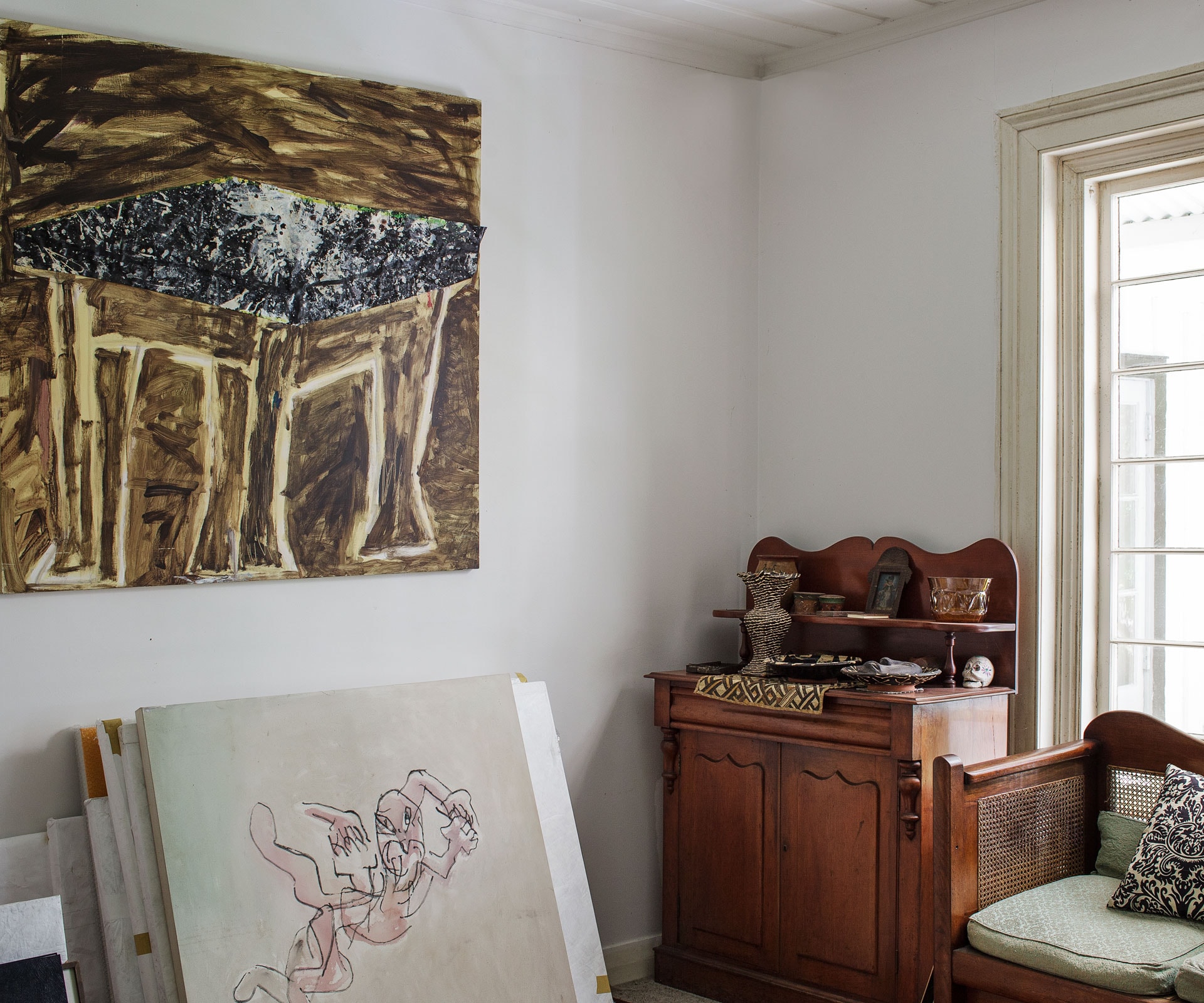
The hand-painted Viennese cabinet and trunk at the front door of the New Plymouth home are pieces Tom’s family brought with them to New Zealand. Other items I admired throughout the house, such as the daybed in the front living room, have their own intriguing stories. Tom had seen the daybed on someone’s front porch and wrote to ask if they
would sell it. He received a reply 11 years later saying the owners were ready to sell.
There’s romance in the gathering of the home’s contents – from the roadside, shared travels and from family. Soft tones set the backdrop for the juxtaposition of folk furniture and big, cartoonish art works. The home speaks of individuality, of lives lived richly
and with creativity.
Words by: Katie Lockhart. Photography by: Darryl Ward.
[related_articles post1=”82671″ post2=”82964″]




